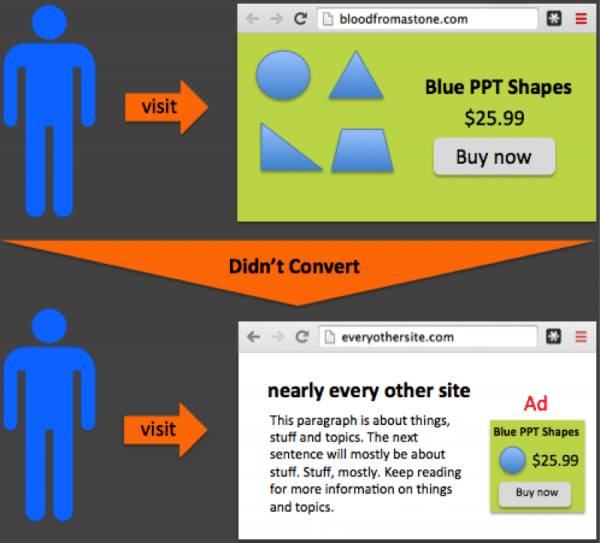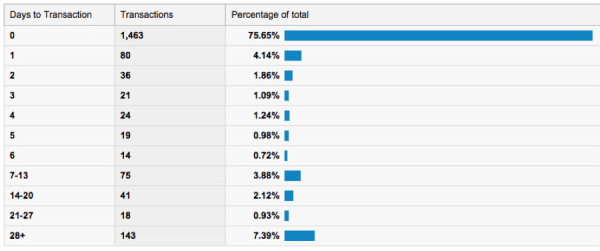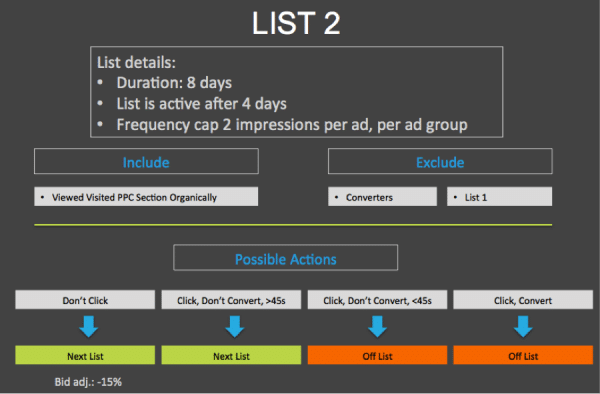Have you ever found yourself the victim of a poorly designed and executed retargeting campaign? Who are we kidding, of course you have. Abusive retargeting is like chugging ipecac syrup; it will immediately make you toss your cookies. Worse yet, obnoxious retargeting can alienate potential customers and devalue brand equity for a company of any size.
Of course there are some fundamental configurations to consider when building or optimizing an existing retargeting campaign which are strategy agnostic; from establishing list durations, frequency caps and burn actions to finding the intersection of audience specificity and volume.
In this post we’ll go deeper, to a level of customer-centric retargeting which inherently takes into account the aforementioned tactics and employs the concept of sequenced ad messaging on top.
First, let’s look at a very basic retargeting scenario. At the core, it usually looks something like:
- The user visited a specific section of the site and didn’t convert
At the very minimum, the retargeting system should be employing list durations, frequency caps and burn actions. Let’s summarize each briefly.
List Durations
Simply put, this is how many days a user will remain on the retargeting list. Google allows list durations up to 540 days; just because you can do it, doesn’t mean you should. Generally speaking, list duration should mirror and be determined by the sales cycle.
Tip: Use Time to Purchase Google Analytics reports to understand how quickly customers move through the sales cycle. The time to purchase for a snowboard jacket will most likely be shorter than the time to purchase for a plane ticket to Crested Butte.
Frequency Caps
Frequency capping controls the number of ad impressions a targeted user is eligible to see each day. In AdWords, you can set this at the ad group or campaign level.
Tip: Throttling ad impressions, outside of a retargeting campaign, allows advertisers to focus on driving unique user ad views. Set low frequency caps to drive high unique user ad impressions and visits.
Burn Action
The burn action is an important component to any solid retargeting campaign. Once the user has taken the desired action, stop asking them to take the same action, at least until the data shows they are likely to convert again. For the amount I eat Jimmy John’s, that’s generally a 24-hour window. Even then, if a frequent repeat customer is familiar with a process, the ad dollars arguably are better spent to generate new customers rather than sales from existing.
Tip: If the objective is to increase percentage of new users to the site OR if there is no need to serve an ad to a user who has already converted, create a list of all users who have been to the site OR taken the desired action and max out list duration and the look-back window. Exclude this list from search and/or display network campaigns.
Message Sequencing
Let’s stitch these ideas together. At its core, message sequencing seeks to provide a valuable customer experience through perceived user interest of varied value propositions and offers.
Here’s how it works.
1st: A user visits a particular page of the site which signals an interest in a service, product and/or content. Dependent on the volume of users arriving on this page, we may decide to segment the audience even further to include engagement metrics like time on page or average number of pages visited. If possible, start by creating lists from organic traffic with high engagement.
2nd: Serve them an ad with a primary KPI call-to-action or “hard CTA.”
3rd: At this point, the user can do one of two things, click or not.
- If the user doesn’t click, it may be worth testing a different offer or value proposition to help them over the fence.
- If the user clicks, they can either convert or not. If they don’t, but are highly active on the site it may make sense to keep them in cycle. It also may make sense not to serve ads to them any longer; it will no doubt depend on the objective.
The chart below shows the decision tree with a few additional layers.
Each decision point on the tree is comprised of a list which will require a combination of frequency caps, list durations, burn actions and varied creative.
If the user does not click, the above list will expire at the end of four days and the user will automatically become part of list two containing Key Feature ads.
Factor in time decay as the days from the initial interaction grows and consider setting bid adjustments accordingly.
Testing Themes vs. Testing Value Propositions
Ad sequenced campaigns are designed to test themes (colors, images, style, etc.) within each list. Value propositions should be tested from one list to the next as these should be key messages unique to each user stage in the sequence.
Retargeting requires an understanding of how various campaign configurations work together. Ad message sequencing is just one of several components to a profitable and customer-centric retargeting campaign. Whether optimizing an existing or launching a new campaign, established process is key for success. The universal bottom line: in order to maintain and grow brand equity, marketers must keep the customer experience at the fore. It’s not a new idea, but sometimes falls in the shadow of new marketing technologies.














